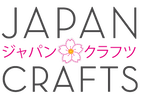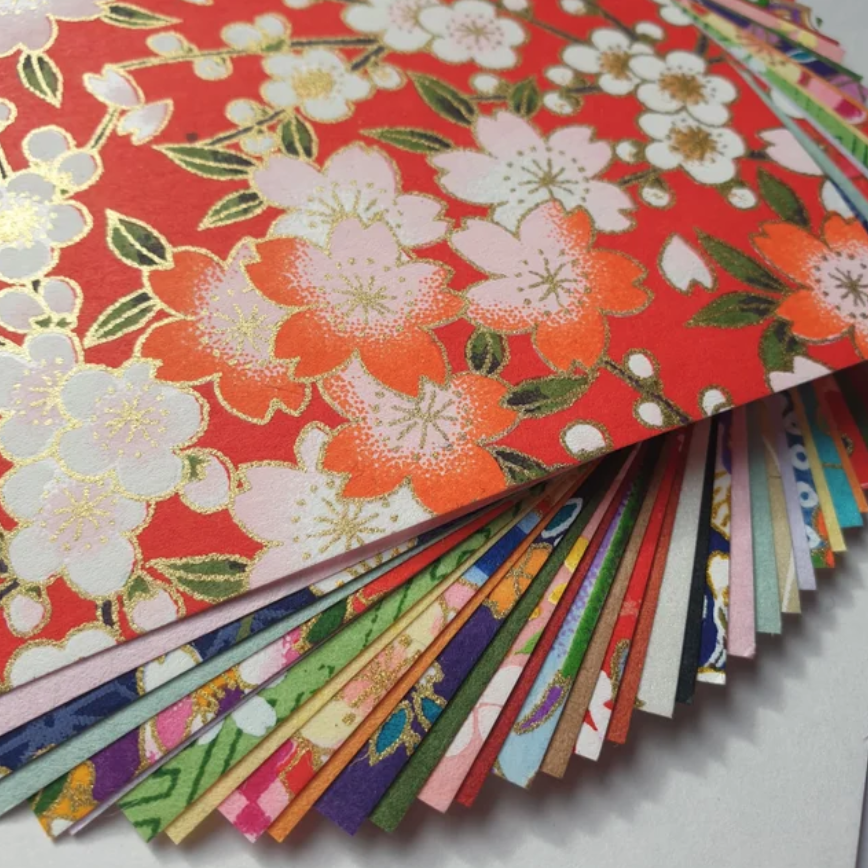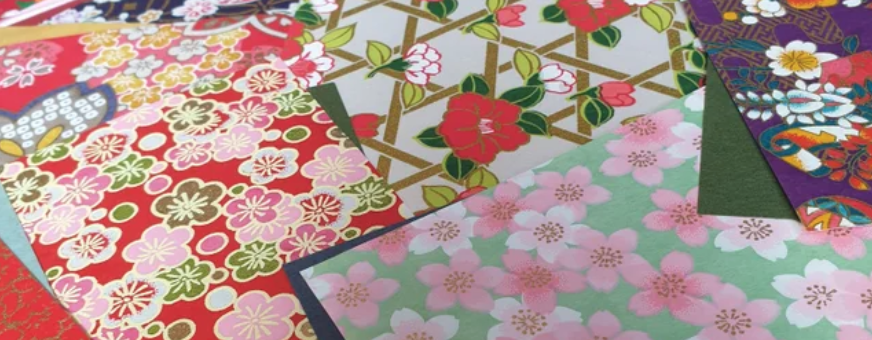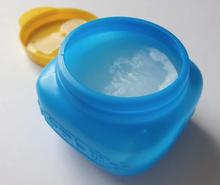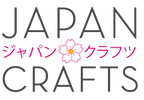|
I've just received a delivery of completely different products from Japan - washi paper! This paper is very dear to me and I will tell my story in a moment, but first I'd like to tell you about the paper itself. Washi literally means 'Japanese paper'; wa is Japanese and shi is paper. It is made by hand using traditional methods with Japanese bark fibres, recognised as a UNESCO intangible cultural heritage and can be seen on all sorts of items throughout Japan. The beautiful designs are similar to yuzen stencilled and painted kimono designs. This is because originally, kimono fabric sellers would show clients a cheaper paper version first, before making an expensive roll of kimono silk. The paper has a lovely texture and feels soft and warm. It is strong, making it ideal for many papercraft projects as well as bookbinding and even home decor. When I first started Japan Crafts in 2006, I'd only visited Japan once but had fallen in love with the ancient little shops in Kyoto that sold washi paper. It came in every form imaginable from tiny sheets to huge ones. Notebooks, boxes and even dolls in Japanese costumes were made from an endless array of completely different designs. I bought so many souvenirs, and when I set up the business I decided it would be a wonderful product to sell. On my second trip in late 2006, I asked a Japanese friend for help in finding a supplier. She found a famous washi-making shop in Kyoto and arranged a meeting with the old owner, who I later found out was renowned throughout the world for his dedication to washi paper. She told me I would need to find a translator as her English wasn't good enough (it sounded fine to me), but I had no money so I put a call out on a Japanese penpal website (it was 2006, remember) and was answered by someone who wanted to practice their English. On the evening of the meeting, my friend Naoko was on the phone to the washi maker for what seemed like hours, arranging and checking the arrangements time and again. I was to meet him at his shop, then he would take me for a bite to eat. I had to take along my daughter Ebony, who was 7 at the time, but it all seemed quite casual and he said that was fine. As well as having nothing remotely smart to wear, I hadn't realised that I should have prepared a fancy gift in England, so Naoko helped me to cobble an omiyage from some Yorkshire teabags and other things we couldn't live without during our trip. We met at the shop, along with the 18 year old 'translator' whose English was, shall we say, not quite fluent, and the old businessman ceremoniously presented his business card and told me I shouldn't have brought a gift. "No really, you shouldn't have!" We bundled into his extremely large black SUV (a contrast to most cars in Kyoto which were tiny) and admired the built-in SatNav screen and parking aides, which seemed very futuristic. He said he would take us for "a sandwich, or something" before pulling up at the Rihga Royal Kyoto where we were whisked up to the 14th floor revolving French restaurant. He seemed well-known by the staff and negotiated an off-menu giant carved tomato for Ebony (the most fantastic carved tomato you've ever seen), a vegetarian dish for me, a burger for the translator and a £300 Kobe beef steak for himself. After the initial pleasantries it became quite clear that the translator was way out of her depth and the 'meeting' consisted mainly of her chatting to him about washi paper and telling me how interesting he was. Needless to say, I went about the whole situation completely unprofessionally (I didn't know any better) and business relations went no further. I did stock washi paper (from another supplier) for a few years and did very well with it on Create and Craft TV in 2010, but I found that when I started to sell fabric, people got confused. They expected the paper designs to be exactly the same as the fabric, and once I started doing regular quilt shows, the fabric took over. It's only recently with the opening of the shop in Digbeth that I looked into washi again, contacted the little shop in Kyoto and found that the old owner's son (or grandson) now specialises in international wholesale! I was able to commission a variety of products such as handmade paper boxes filled with hundreds of tiny sheets to origami packs, to huge full-size sheets of their beautiful paper. It is all still painstakingly made the traditional way, and took over a month to be prepared. I've put the smaller items on the website, but will probably only sell the large sheets in the shop for now. I may cut some of them up to make scrap packs if customers would like that (any feedback welcome!). To complement the gorgeous washi paper I've also gone back to another of my very first products which is nori rice-paste glue. This was the first ever item I bought wholesale from Japan and I got it directly from the manufacturers, Yamato. Yamato is the best-known brand of glue in Japan and is used by everybody from kindergarten age upwards. It is simply rice starch paste, completely safe and non toxic - it is used by young children as it's even ok for them to lick it off their fingers, although I would really not recommend this!!! Bookbinders, crafters and even sword repairers have bought this fabulous paste from me over the years. Although that first order I made was quite memorable and almost put me off business forever! This was back when Japanese websites with any English were a very rare thing, but I managed to place a wholesale order. Their minimum quantity was 1,500 green tubes of glue, so I ordered this, plus a couple of hundred larger blue tubs. All was well until I was contacted by the freight terminal at Newcastle Airport to ask which courier they should expect to pick up the shipment. Well, I had no idea about couriers back then and even less money to spend on one, so my Dad offered to drive up to the airport with me. Luckily we chose his estate car rather than my 800cc Daewoo Matiz because when we got there, they started bringing pallets out of the warehouse! We just about squeezed all the boxes of glue into the car, and I had boxes stashed under every table in the house for about 5 years until it all sold. Fortunately there is now a distributor in the UK so I don't have to order so much, but I must admit to having a bit of a 'trigger' moment when I opened the delivery and saw those familiar glue boxes again!!! I do hope you've enjoyed reading about my misadventures and business faux pas which helped to shape Japan Crafts as it is today. It's sometimes good to come full-circle and I am certainly a very different businesswoman to the one I was back in 2006. It's great to bring these wonderful products back for more customers to share and I hope you will have a look at them, if not for yourself then perhaps as a gift for someone else (we all know what's coming in December...). Spread the word, it really does help small businesses who are going through a very difficult time at the moment!x
7 Comments
|
we are social
about usI started Japan Crafts in 2006 and have been bringing wonderful fabrics and techniques to people in the UK ever since. categories
All
archives
January 2023
other posts
|
